Puerto Rico Road Trip #1: Caguana Ceremonial Indigenous Heritage Center
The Plan
There were a number of places that I had read about and wanted to visit in Puerto Rico, but of course you cannot see them all in one visit. Given that the island is small, though--3,515 square miles compared to the 1,982 of Delaware and 5,543 of Connecticut—I wondered if maybe I could take a day trip around it to see some things away from the capital, which you definitely can do. There are lots of cool places to see and things to do around the island: Beaches, rainforest, cities, caving, swimming, etc.
These were the three destinations that seemed interesting and that we could conveniently visit in an efficient one-day road trip loop around the island:
1) Caguana Ceremonial Indigenous Heritage Center
2) Ponce (Puerto Rico's "second city")
3) La Ruta Lechonera (the Pork Highway)
The Park
Caguana Ceremonial Indigenous Heritage Center is an archaeological site from the Taíno people, the first known inhabitants of Puerto Rico. The title is a lot to type, so I will just call the place "the park" from now on.
I was so excited to go here. I wonder a lot about how the Americas were before Europeans arrived.
Taíno
Taíno is the word for one of the prominent indigenous peoples/culture of a number of Caribbean islands, including Puerto Rico. A 2018 study said that 61% of Puerto Ricans today have Taíno DNA/ancestry. That said, it seems that most of what I read speaks about about the Taíno people as "ëxtinct." Smallpox was brought to the island by Spanish explorers in the 1400's and 1500's and largely decimated the Taíno population. Clearly, at some point, though, based on the stat above, some Taíno people decided to get together with some of the Spaniards who had taken control of the island. The "historic Taíno culture," though, seems to be dead.
The park's museum describes the Taíno society and daily life like this:
"The leader of the Taíno society was the cacique, whose authority extended over the territory controlled by his family or tribe. Second in rank to the cacique was the bohíque, a shaman or priest, who transmitted the culture's beliefs, rituals, and magic to its people and who also possessed knowledge of the herbs and plants in the area and their medicinal powers. The warriors were called nitaínos, and the commoners were known as naboría.
The Taínos were skilled farmers. They cultivated small plots of land called conucos and established irrigation systems for their crops. They grew maize or corn and a number of root vegetables such as yautía (cassava), with which they made bread. They also cultivated fruit trees and other plants, such as tobacco and the cojaba tree, for medicinal use and for their rituals.
Another source of food for the Taínos was animals, among them the jutía (a large rodent), the iguana, and the manatee, or sea-cow. In communities near the ocean, the people fished and gathered land crabs, conch, and various types of molluscs. With the shells of these latter animals the Taínos made tools and adornments for the body."
San Juan --> Utuado
This is the route to get from San Juan to Utuado, the town in Puerto Rico where the park that we wanted to visit is.
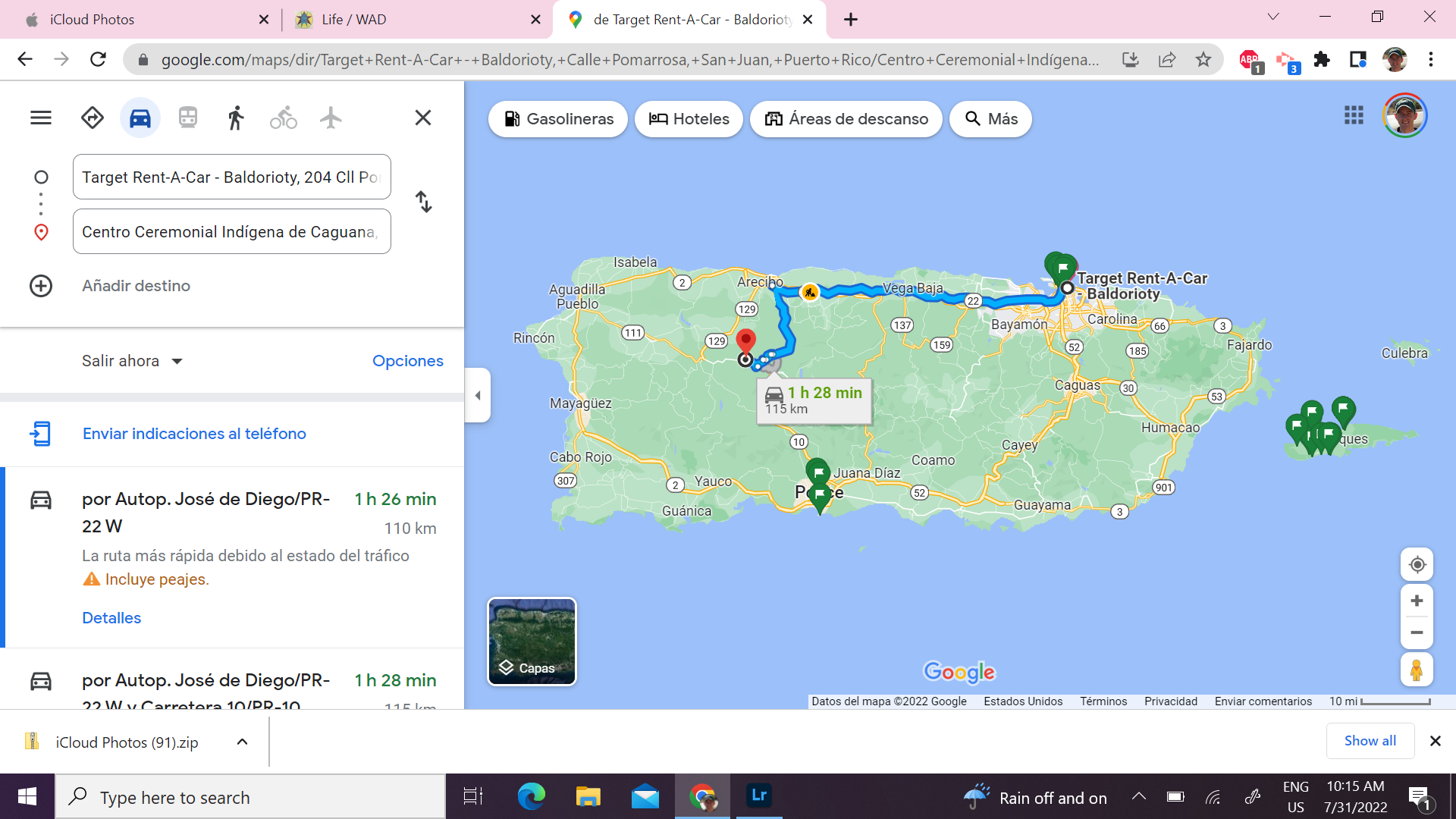
Target Rent-A-Car
There isn't much public transportation in Puerto Rico, so if you want to travel somewhere within the island, you would either have to rent a car and drive yourself around, or take taxis.
Thankfully, we were able to get a rental car from Target Rent-A-Car in Santurce, PR. I was worried because rental cars in Puerto Rico are apparently limited and are often sold out during high travel seasons. I reserved this one several weeks in advance. From what I read online, if I would have waited until the last minute, I likely would not have been able to get one.

La Entrada
This is the entrance to the park:
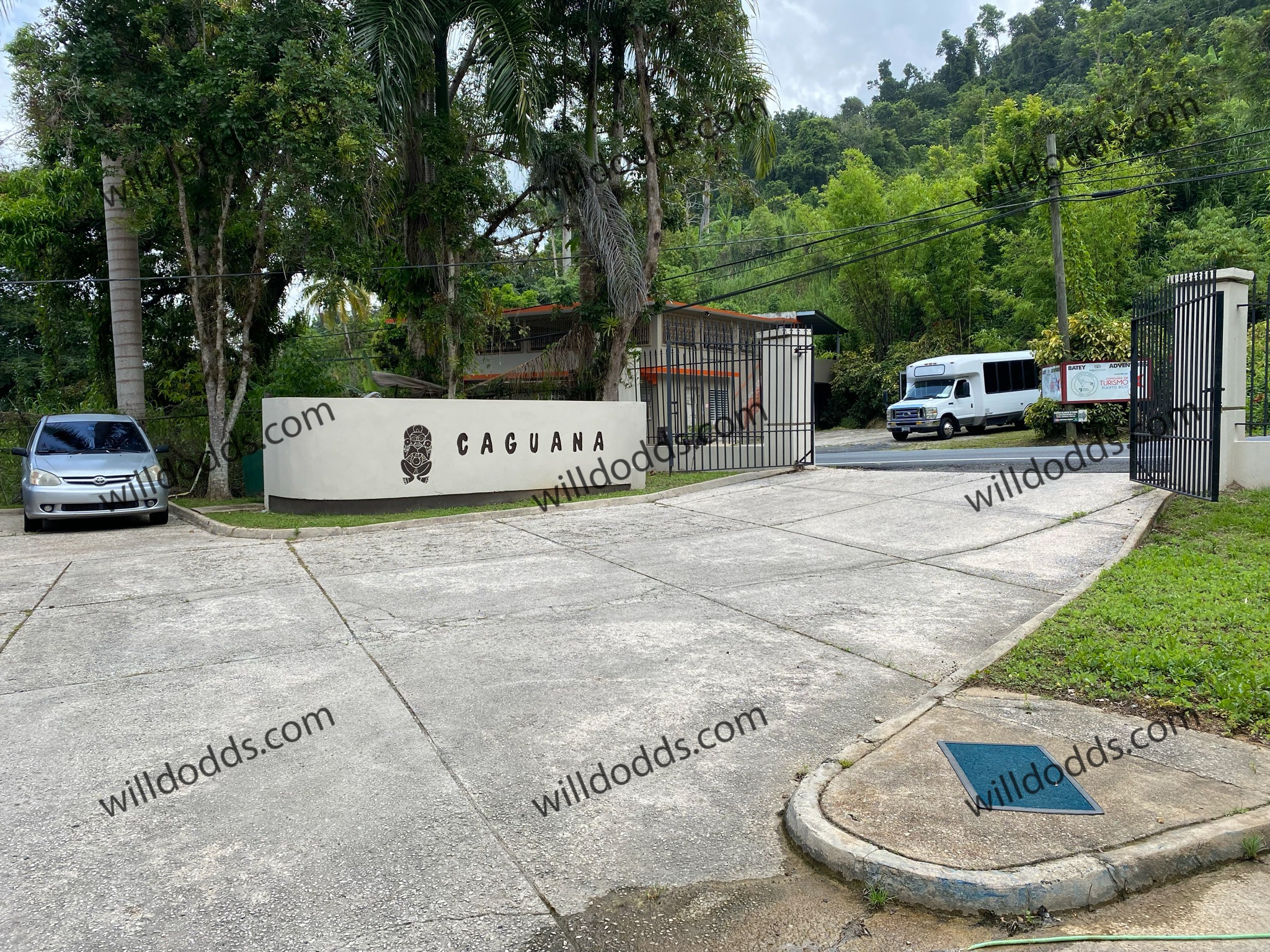
El Museo
After parking in the lot near the entrance, you walk down a long path until you arrive the museum, or visitor's center, where you can read about the park, pay for your entrance, talk to a guide, etc.
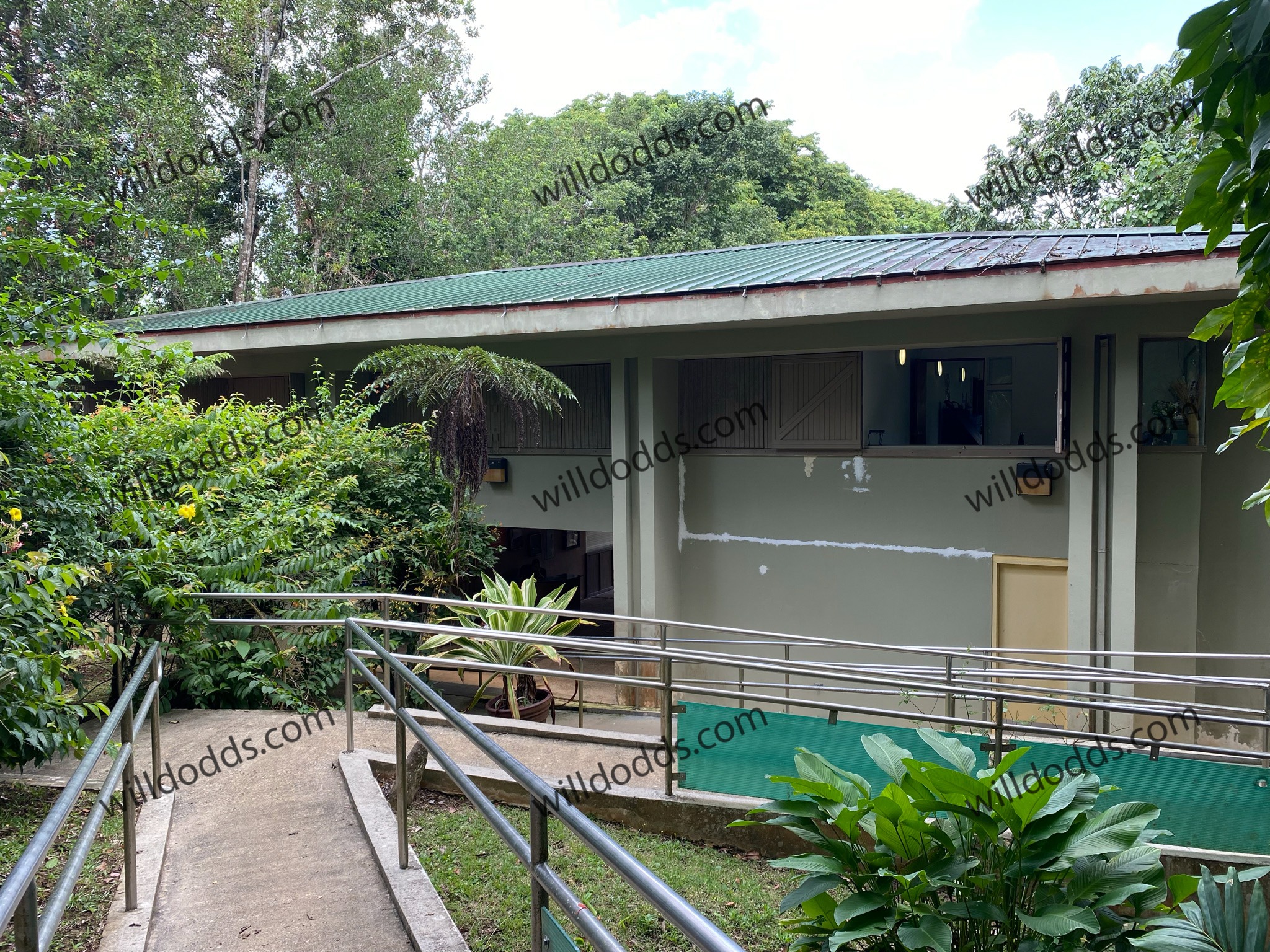
Los Árboles
Once you enter, you continue walking down a path that takes you further into the park. Check out these trees that line the path:

El Camino
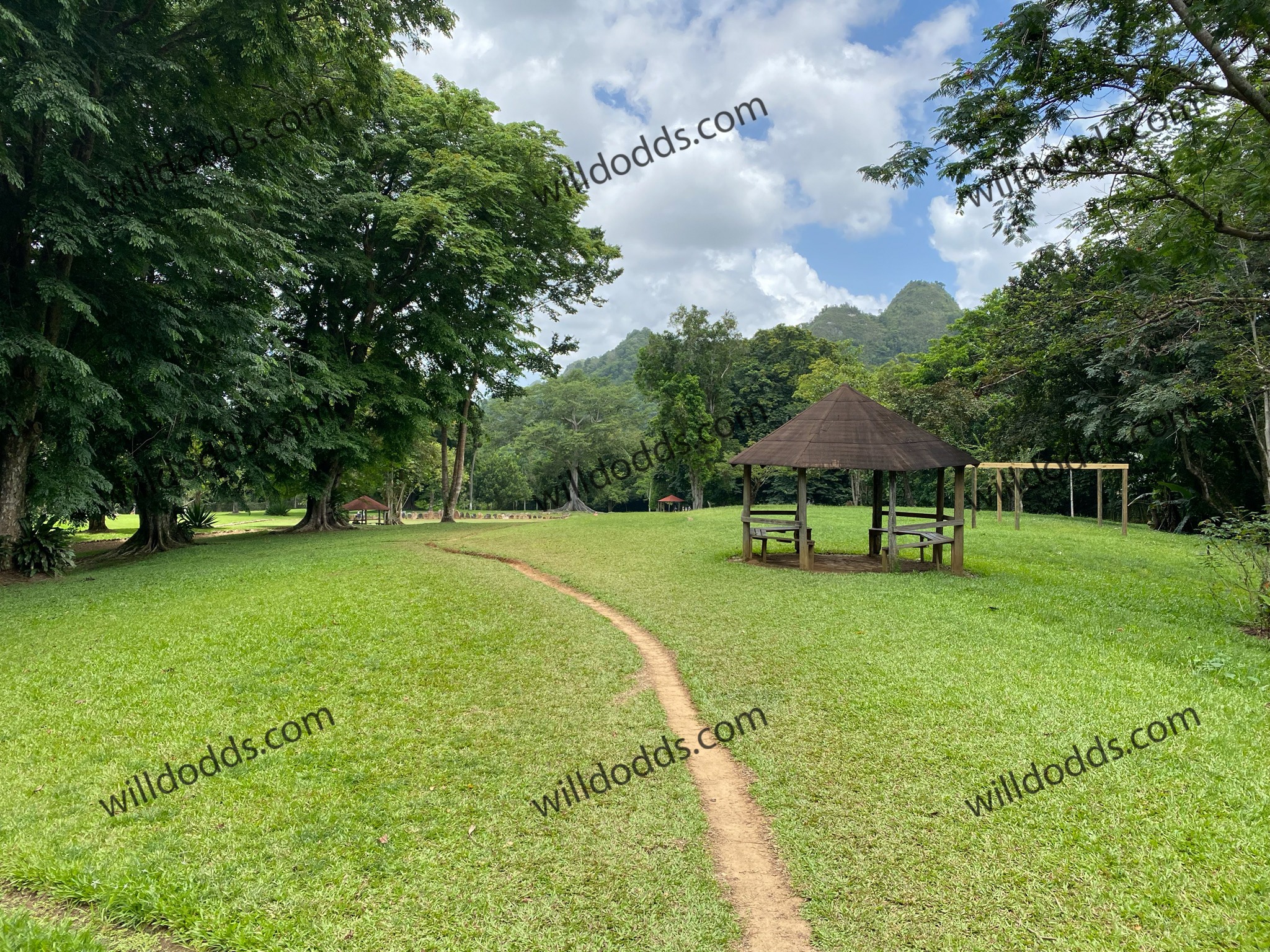
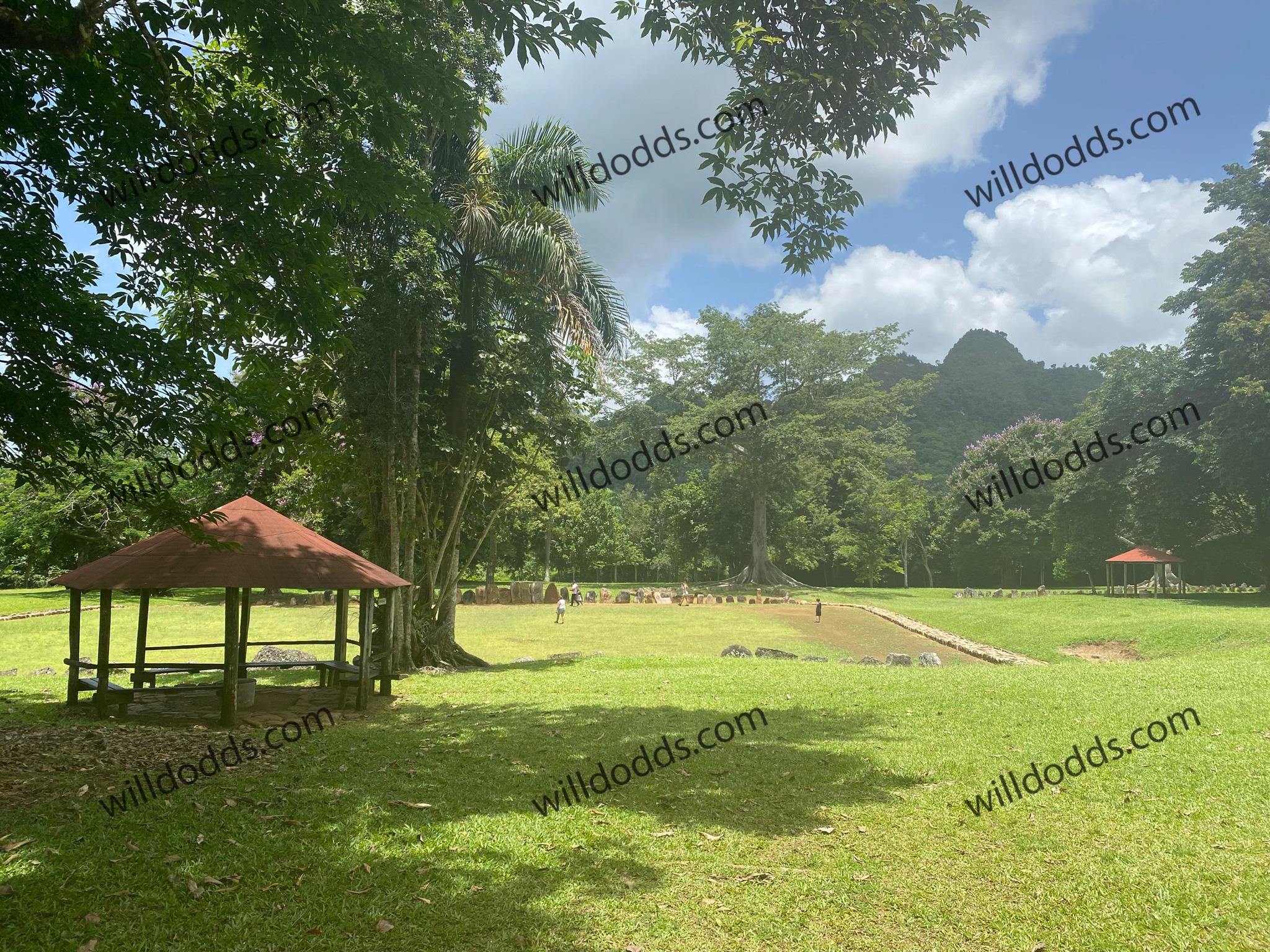
Batey
Have you heard of the Mesoamerican ball game? It seems that a lot of cultures of Mesoamerica (modern day Central America) and nearby regions/places in this era played a "ball game." The Taíno people, too, played a ball game. These, the rectangular areas, or bateyes, were their playing fields.
Batey refers to the areas, the game, and the ball used to play the game.
Some of what I have read indicates that not enough is known about the game to uncover the rules of it, other than that these games involved a ball and often incorporated a ceremonial purpose, sometimes which involved sacrificing a participant or participants from the losing team.
I recently read that the ball of the "ball game" played by the Maya people (modern day Central America) was made of tree resin and was so heavy that it severely injured or even killed players who were blindsided by its toss.

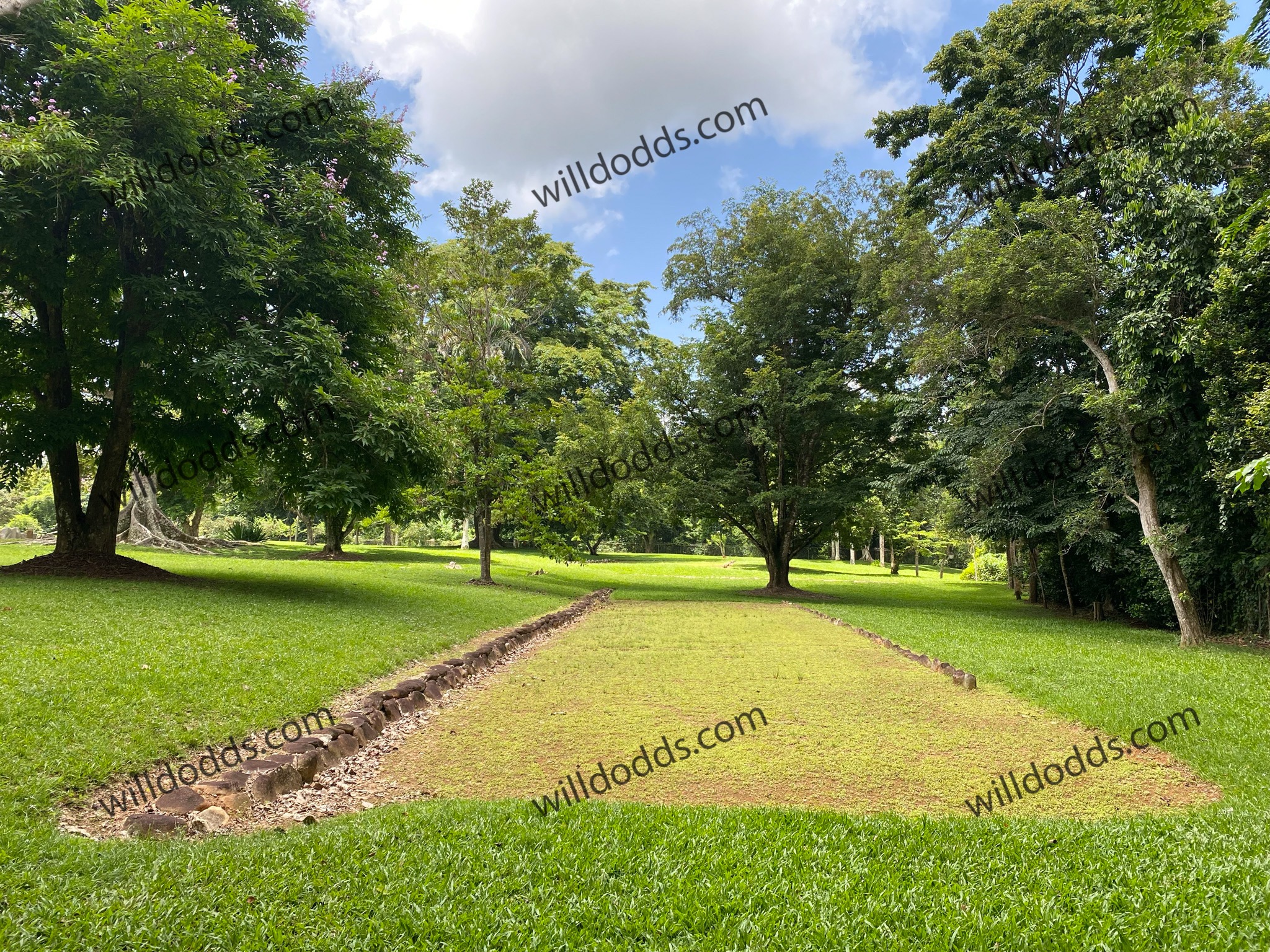
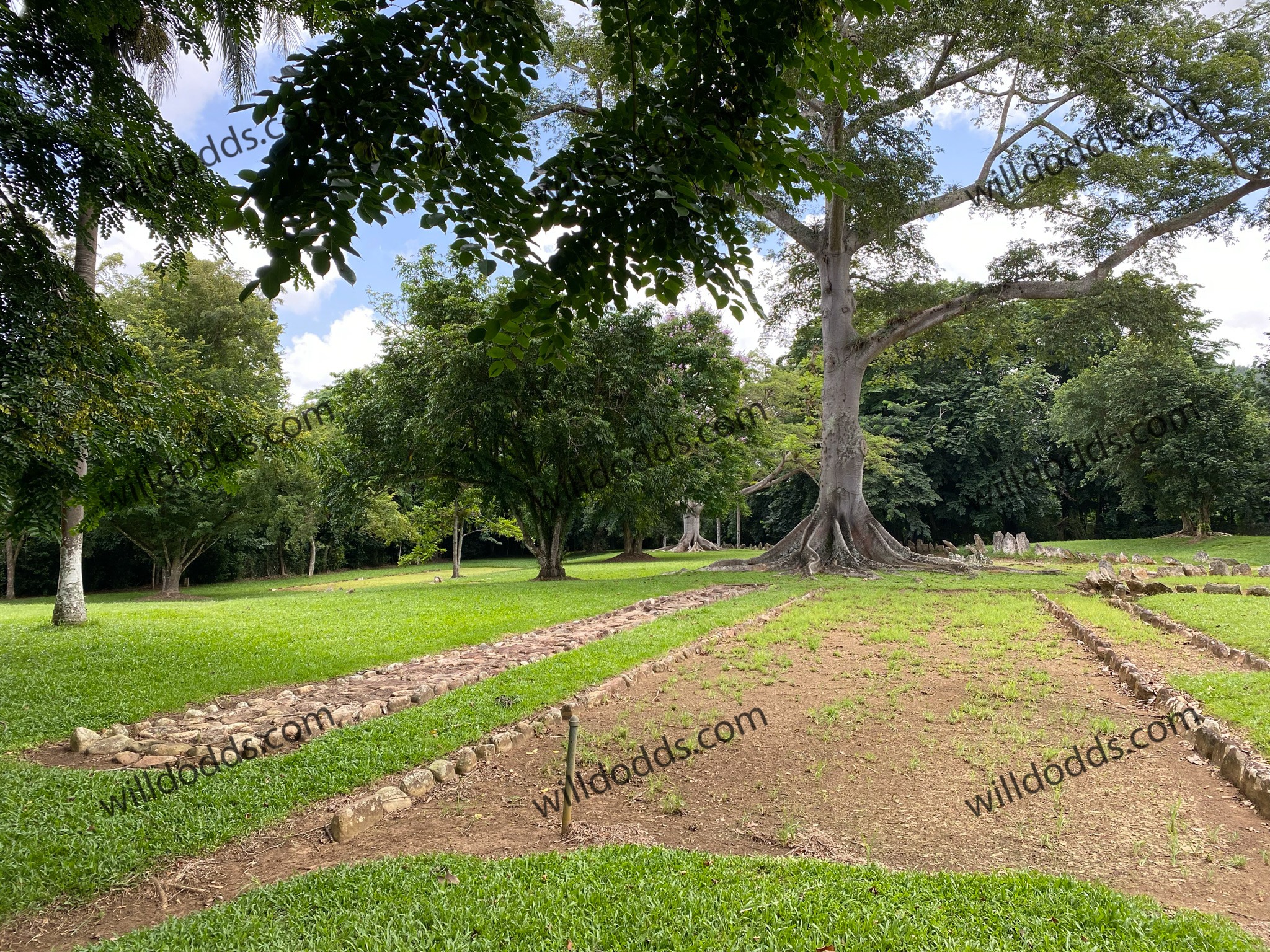
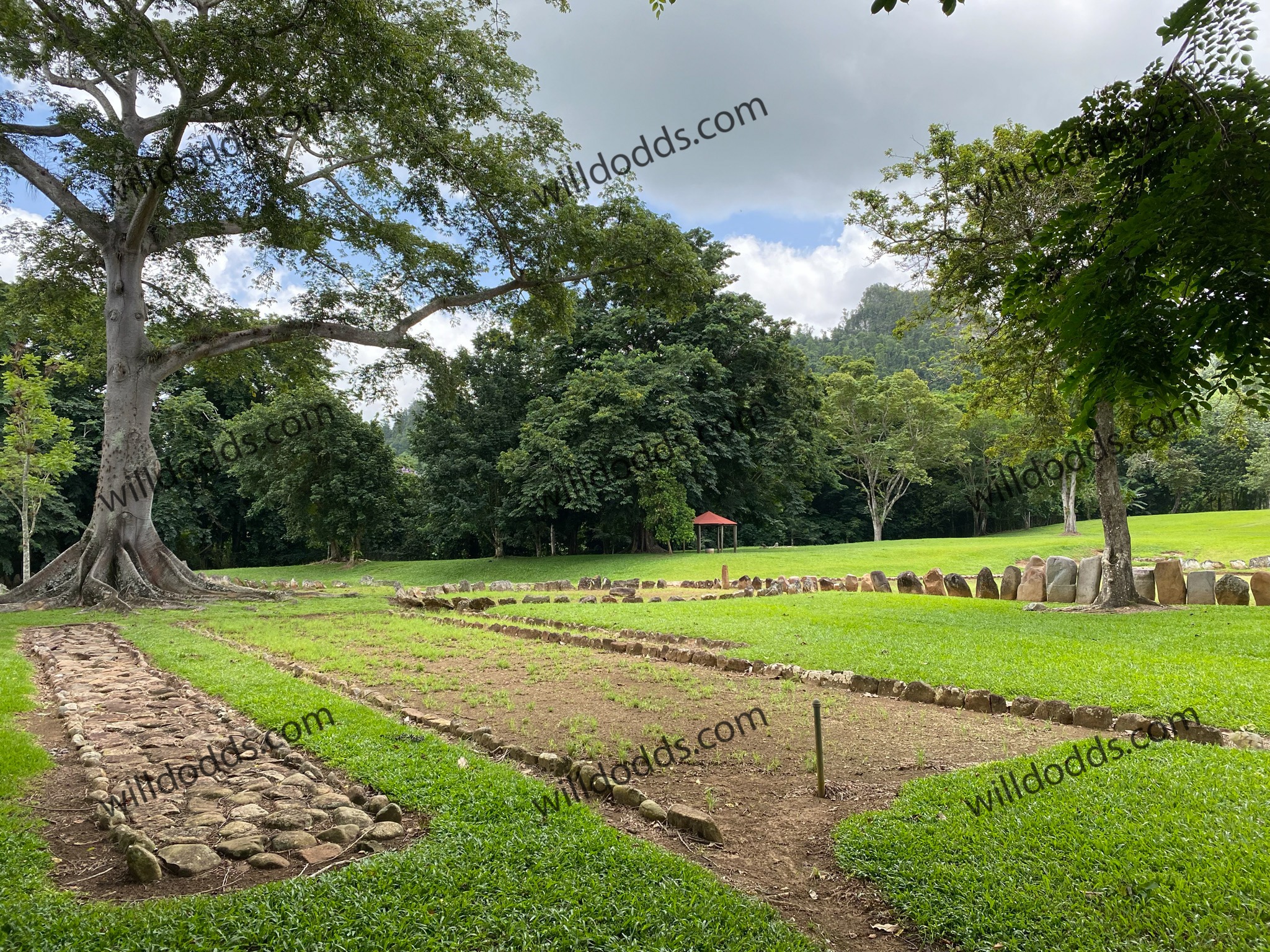
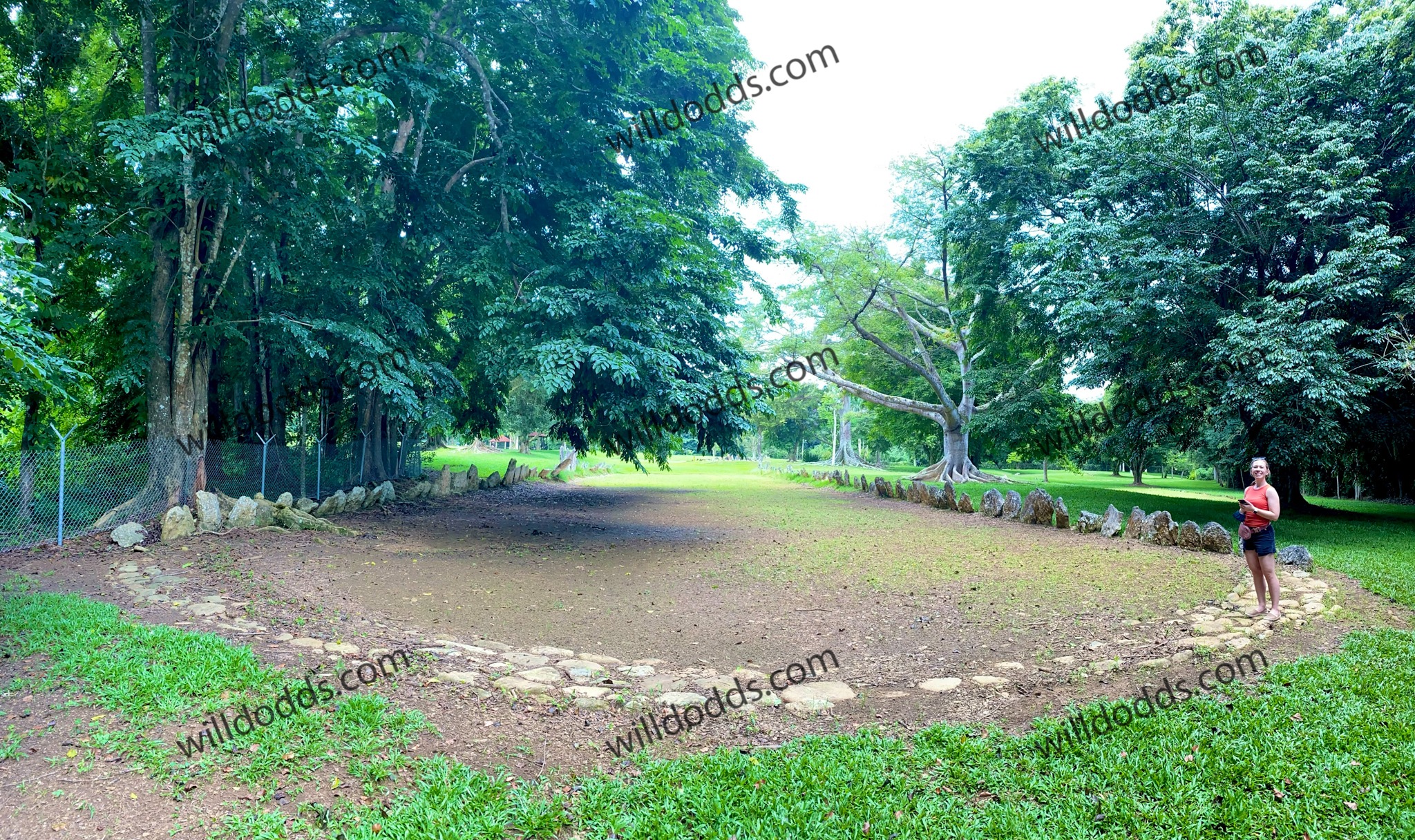
Petroglyphs and Areitos
Some bateyes are surrounded by petroglyphs, the figures carved into stones in the two pictures below. These petroglyphs likely signal the bateyes where the people living in this place held their areitos, or ceremonies.
I took this from the park's museum:
"The areito consisted of a series of dances and songs that were held to honor and perpetuate the greatness of the cacique and his lineage, and transmit the people's history and beliefs.
There were a number of different types of areitos: Those related to daily life and those of a more solemn nature, which were governed by a rigid ceremonial protocol. The more solemn areitos had a clear mythological content, in which the cacique's lineage figured."
The museum says this about the petroglyhps:
"On the 22 petroglyphs found at Plaza A can be seen portrayals of animals, human faces without bodies, possibly representing the caciques, and complete human figures with zoomorphic (animal-like) features, which may symbolize the caciques' ancestors.
The significance of these figures carved into stone is closely linked to the ceremonies/areítos that were held in this plaza. In general, the sequence of images evokes myths and beliefs relating to the origin of the universe and the origin of life, the importance of the cacique, and the worship and veneration of ancestors.
The petroglyphs themselves are monumental cemíes, three-pointed representations of the Taíno's principal god. These figures symbolized, basically, the idea of supernatural power and energy. The Taínos believed that the spirits of their ancestors became powerful cemíes, and that these powers had to be venerated and worshipped.
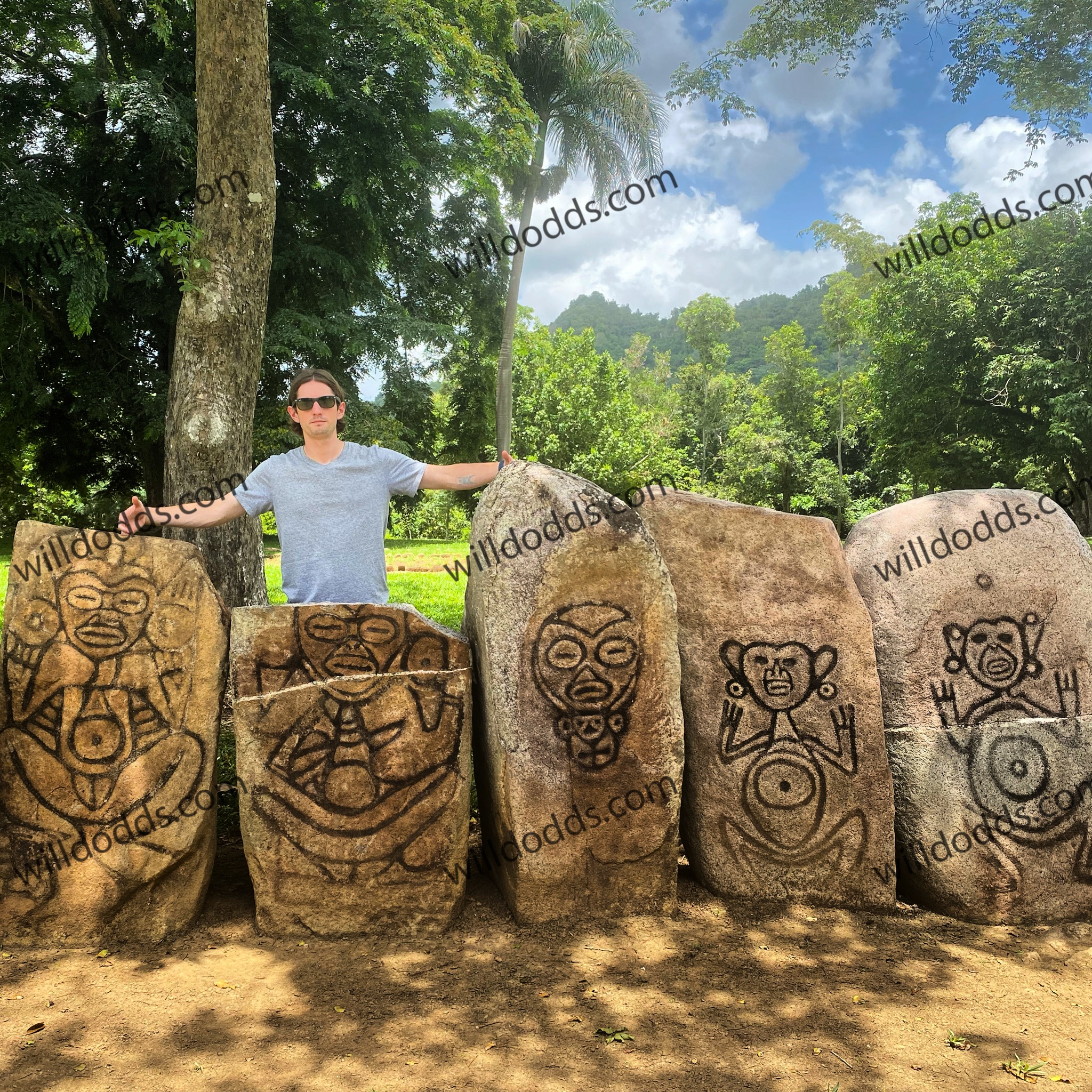

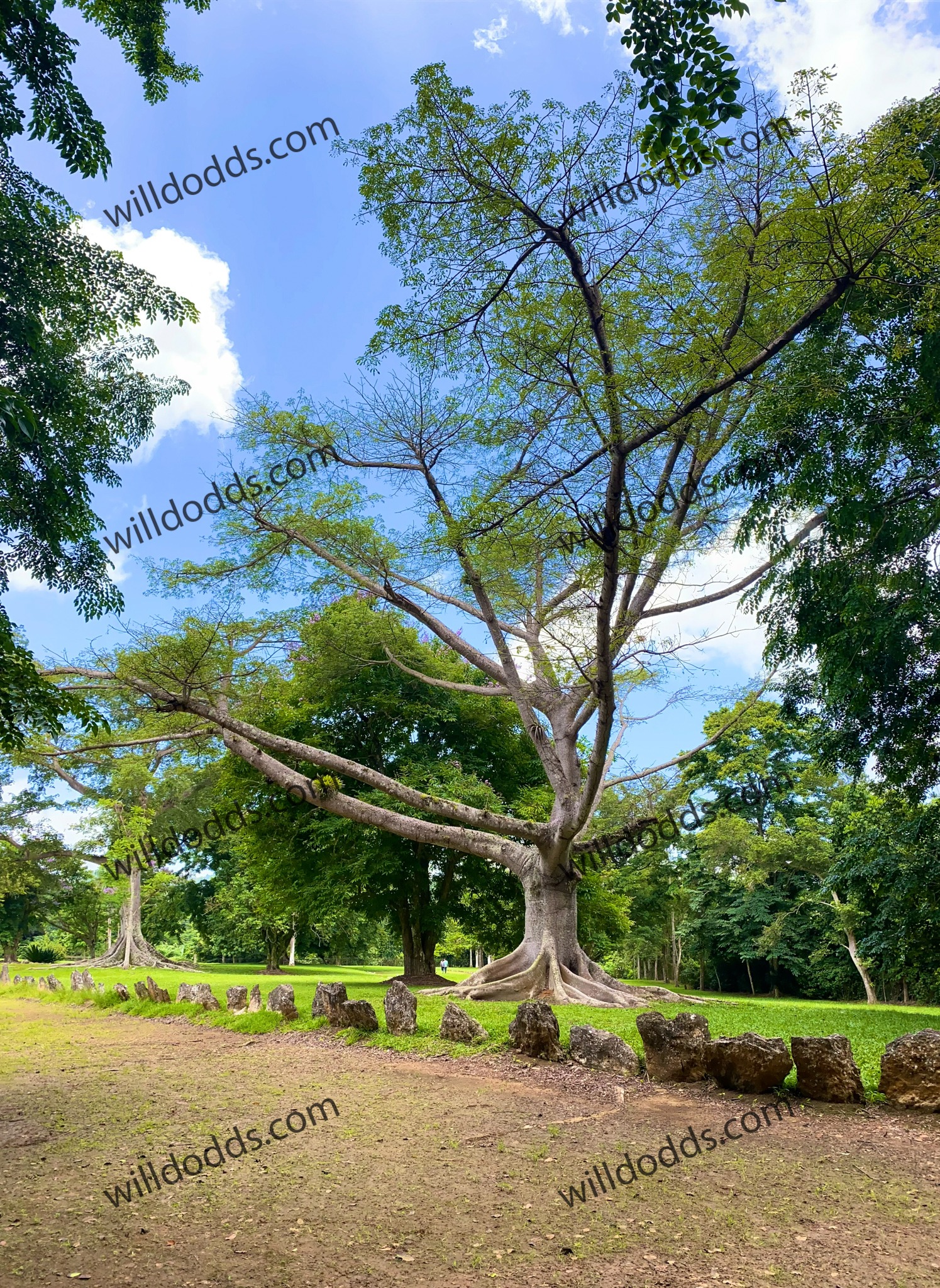
Post a comment